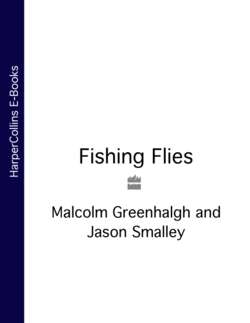Читать книгу Fishing Flies - Smalley - Страница 46
Larvae and Pupae
ОглавлениеSeveral Orders of aquatic insects have a life cycle consisting of complete metamorphosis in which, instead of a nymph, a larva hatches from the egg. The larva is the feeding and growing stage. In some species it may last only a few weeks (e.g. mosquitoes) whereas in others it lasts about a year (e.g. caddisflies). The larva usually looks nothing like the adult and in some species it looks more like a worm than an insect (e.g. the larval bloodworm that gives rise to the adult chironomid midge). When the larva reaches maximum size it enters a resting stage, the pupa, when its tissues are reorganised into the adult form. A special case, or cocoon, is sometimes constructed in which the pupa hides away from potential predators. Then, when the time is right for the adult to hatch, either the adult emerges from the cocoon and swims to the surface (e.g. reed smults), or the pupa swims to the surface and the adult emerges there (e.g. chironomid midges). In that very important group of trout foods, the caddisflies (or sedges), the pupal cocoon is enclosed in a caddis case, even in those species in which the larvae lack cases. The adult breaks free of its case and cocoon and swims to the surface enclosed in a skin-like sheath that was part of the pupal structure. To entomologists, this is known as a ‘pharate adult’ or ‘clothed adult’ and was brought to the attention of the fly-tying world by the American anglerentomologist Gary LaFontaine. Many fly-tyers and fly-fishers, however, still call this stage a ‘pupa’. This is not unreasonable, for the pharate adult is quite different in its shape and behaviour from the adult standing or flying above the water. Once at the surface, the adult caddisfly rapidly takes flight, leaving the sheath behind.
In some aquatic insects the fully grown larva crawls ashore to pupate in damp waterside sand or silt (e.g. aquatic beetles and alderflies). The trout never encounter the pupae nor the hatching adults of these species.
NOTE: Some writers have included larvae and pupae, and other subsurface aquatic invertebrates such as water boatmen (back swimmers) and freshwater shrimps (scuds), with nymphs. Scientifically this is incorrect. In years to come even the word ‘nymph’ may slowly vanish, for freshwater biologists now call nymphs, ‘larvae’, thus ceasing to differentiate between the incomplete and complete growing stages of metamorphosis life cycles.
